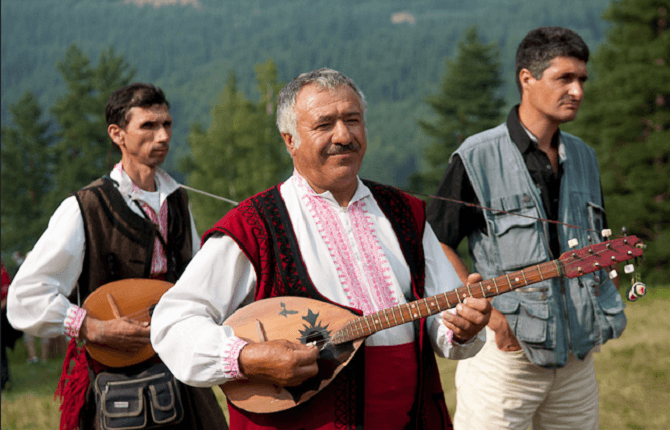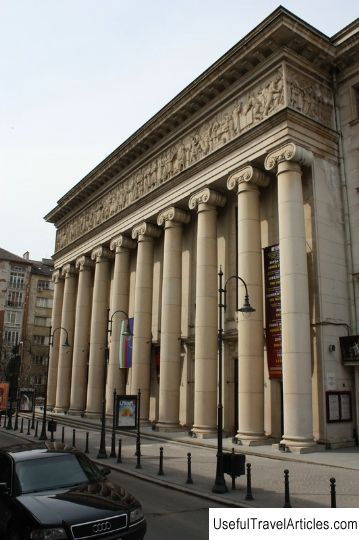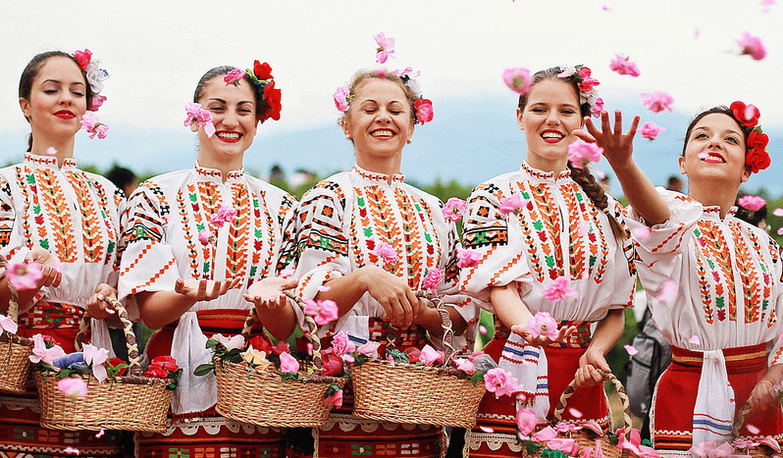Folk music of Bulgaria
Rating: 9,5/10 (9454 votes)   Bulgarian folk music Music in Bulgaria can be of any genre: from classics, folk genres to popular, modern music. Classical music, opera and ballet, which draw their inspiration from folk music, are well represented by famous Bulgarian composers, singers, such as: · Emanuil Manolov - the composer was the founder of the professional Bulgarian musical culture. He composed the first Bulgarian opera, Sirotina, based on a work by Ivan Vazov. His works in the genres of kitka and school songs are very popular. · Pancho Vladigerov (Pancho Kharalanov Vladigerov) - the most influential Bulgarian composer of all time. He was one of the first to successfully combine the idioms of Bulgarian folk and classical music. Vladigerov was part of the so-called second generation of Bulgarian composers. He was one of the founding members of the Bulgarian Contemporary Music Society (1933), which later became the Union of Bulgarian Composers. Vladigerov founded a number of new genres in music (for example, violin sonata, piano trio). He was a respected teacher, his students include almost all notable Bulgarian composers of the next generation, as well as the famous pianist Alexis Weissenberg (Alexis Weissenberg). · Georgi Atanasov (Georgi Atanasov) - known as the leader of military bands. He directed the National Opera during the 1922/23 season. Atanasov was the first professional Bulgarian opera composer. His style is Italian, melodic influenced by folk idioms. He alternated contrasting musical numbers for dramatic effect in his work.  Ghena Dimitrova · Ghena Dimitrova (Gena Dimitrova) was a Bulgarian opera soprano. Her voice has been known for its purity and resilience for 40 years. · Boris Hristov (Boris Kirilov Hristov) - was an opera singer, reputedly one of the greatest basses of the 20th century. Raina Kabaivanska (Raina Kabaivanska) - Bulgarian opera singer, one of the leading lyric sopranos of her generation. · Nicolai Ghiaurov (Nikolay Gyaurov) is a Bulgarian opera singer and one of the most famous basses of the post-war period. He was admired for his powerful, luxurious voice. One of the most famous folk singers in Bulgaria is the female vocal choir, which won a Grammy in 1990. The world renowned ensemble performs modern arrangements of folk melodies. The choir was created in 1952. Its main feature is the choice of performers. Singers are selected from small villages, checking their voices for clarity, sonority and melody in accordance with centuries-old traditions of singing manner. Bulgarian folk music uses a wide range of instruments. Some of them are variants of traditional Asian musical instruments (for example, saz - Bulgarian tambura, kemenche - gadulka). Modern instruments that evolved from traditional (wooden) instruments are used only in modern dance music. Folk groups use instruments that include: 1. Gaida is a traditional goat leather bagpipe. This bagpipe has 2 types of tuning: for the key D (D) or for A (A). The gaida bag, made from goat skin, is processed differently depending on the region of the country. The simplest way is to use salt, the difficult one is to process it with a mixture of milk and flour with the preliminary removal of fur. In the Macedonian regions, the hide was turned inside out so that the fur was inside the sack. Thus, it helped to accumulate moisture in the bag. The tube was made of wood (boxwood, dogwood, plum), animal horn. At the end of the tube, a conical air hole (valve) was made, which was closed with felt or leather. There are no patches of data in primitive models, so the musician must return air with the help of language muscles.  Gaida Each musician carried a small cane made of reed, reed or bamboo. The musician played a melody using a tube with 8 notches (notes). A distinctive feature of gaida from the bagpipes of Eastern Europe is the presence of a mumble (horn) - a hole that, during playback, was closed or opened by the musician's index finger. Mumbler function - raising the sound by a semitone. 2. Kaval (Kaval) is a traditional Bulgarian flute. Unlike the transverse flute, the kaval is completely open at both ends. This is why the musician must blow on the pointed edge from one side of the instrument. Kaval has 8 holes (7 in the front, 1 in the back) and an additional 4 holes in the lower part that change tone. 3. Gadulka (Gadulka) - stringed instrument, consisting of 3 (occasionally 4) strings with 16 notes. Playback peculiarity: the musician never pushes the string all the way. 4. Davul (Davul) - a large two-headed drum, played with small hammers. 5. Tambura (Tambura) - carved lute, which performs rhythmic accompaniment, melodic solo. The instrument has 2 steel strings. Musician play sounds using a pick. Folk music, created for the celebration of Christmas, New Year, St. Lazarus, etc. was part of celebrations and weddings. The singing was traditionally male. However, women were allowed to sing while working in the fields. We also recommend reading Brands of Austria Topic: Folk music of Bulgaria. |




